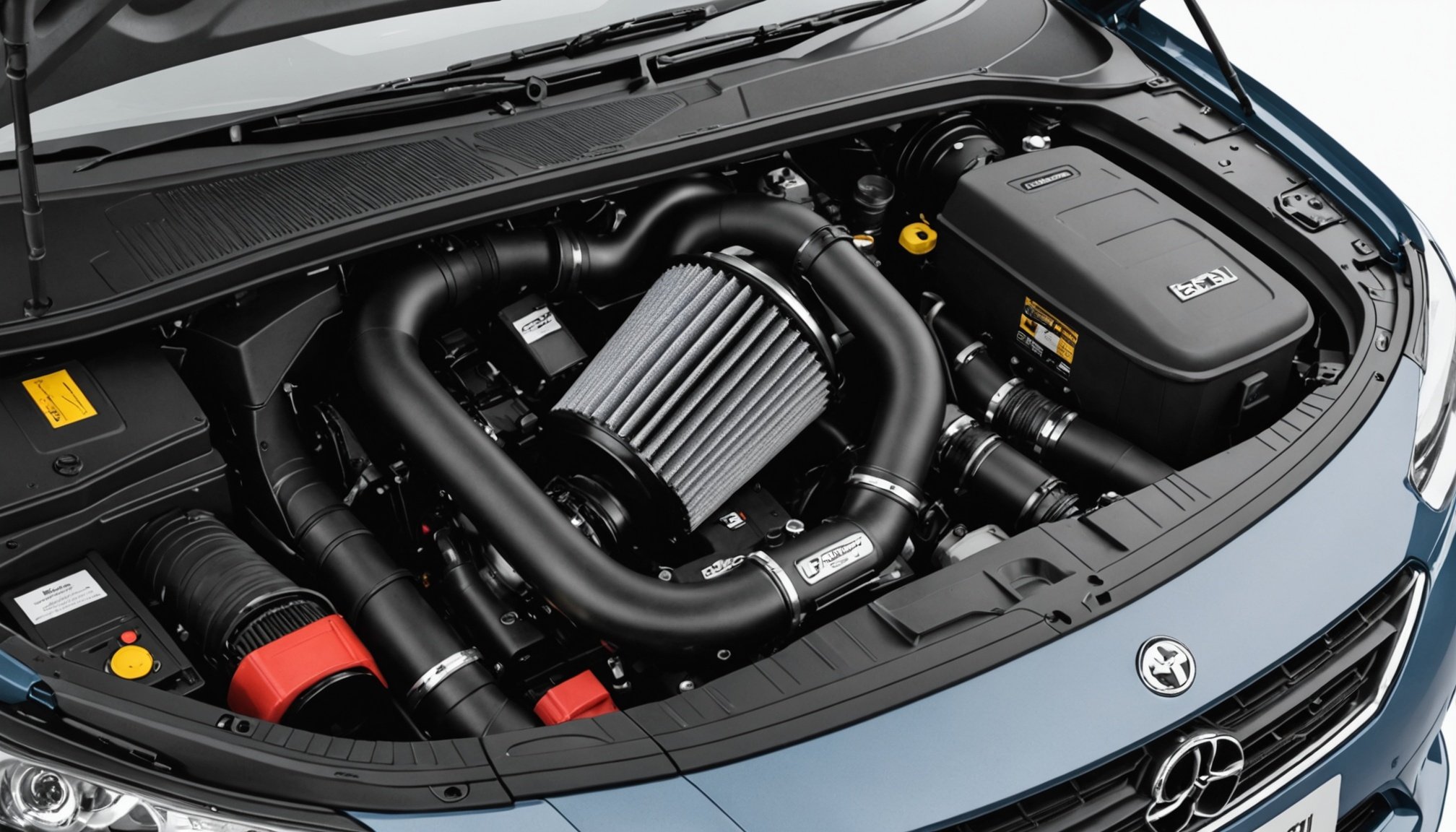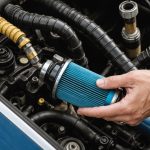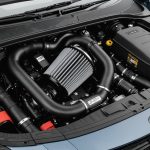Understanding the Importance of Air Intake Systems
Air intake systems are crucial components in family hatchbacks across the UK, significantly impacting both engine performance and fuel efficiency. These systems are responsible for supplying the engine with the air necessary for combustion. A well-functioning air intake system ensures an optimal air-fuel mixture, leading to efficient engine performance and reducing fuel consumption.
Functionality in Family Hatchbacks
In family hatchbacks, the air intake system comprises several parts, including the air filter, intake manifold, and throttle body. These components work collectively to channel fresh air into the engine. By maintaining a consistent airflow, the system allows the engine to perform at its peak, ensuring a smooth and responsive driving experience.
Also to see : Unlocking Cold Start Efficiency: Top Fuel Additives for Enhanced Engine Performance in British Diesel Vehicles
Enhancing Engine Performance and Fuel Efficiency
The air intake system plays a pivotal role in optimizing engine performance. By allowing a greater volume of air into the engine, it improves combustion efficiency. This not only boosts engine power and responsiveness but also enhances fuel efficiency by ensuring that fuel is burned more completely, reducing wastage.
Common Issues
However, stock air intake systems can sometimes hinder vehicle performance. Issues such as clogged air filters or restricted airflow paths can reduce engine efficiency and increase fuel consumption. Regular maintenance and potential upgrades are essential to mitigate these issues and maintain optimal vehicle performance.
Also to discover : Unlocking Peak Track Performance: Expert Tips to Adjust Gear Ratios in British Racing Cars
DIY Modifications for Air Intake Enhancement
When considering DIY air intake mods, it’s about making cost-effective upgrades that deliver performance gains. One simple modification involves replacing the factory air filter with a high-performance aftermarket filter. This enhances airflow without a complicated installation process. Ensure the selected filter suits your specific hatchback to avoid compatibility issues.
An upgrade such as a cold air intake system is another effective option. It draws cooler air from outside the engine bay, boosting engine efficiency and power output. However, verify that any chosen aftermarket parts comply with UK regulations to prevent legal issues or voiding warranties.
Potential safety concerns may arise if modifications aren’t installed correctly. Missteps can lead to decreased performance or damage to the engine. Thus, following installation guides meticulously is crucial. Selecting reliable parts from reputable manufacturers improves the likelihood of successful modding without negative repercussions.
When choosing the right mods, consider the long-term impacts on vehicle performance. Conduct thorough research and utilize online resources, such as car enthusiast forums, for peer advice and recommendations. This ensures you’re investing in parts that will genuinely offer the desired enhancements to your hatchback.
Professional Upgrades and Systems
Upgrading your family hatchback with professional air intake systems can noticeably improve performance. These systems play a pivotal role in enhancing engine efficiency by allowing more air to flow into the combustion chamber. This leads to better fuel combustion and increased power output. For those seeking to maximise their vehicle’s potential, exploring aftermarket solutions is essential.
Several aftermarket performance kits are available, each offering distinct benefits. For instance, cold air intake kits are a popular choice because they draw cooler air into the engine, which is denser and contains more oxygen, thus boosting engine performance. On the other hand, short ram intake kits are designed for easy installation and offer a slight increase in power by increasing airflow.
When considering these upgrades, professional installation is highly recommended. The complexity of these systems requires precision to ensure they’re fitted correctly for optimal results. During the installation process, you can expect technicians to carefully remove existing components and replace them with the new systems, calibrating the engine as necessary. This guarantees the vehicle operates safely and efficiently post-upgrade, providing you with an immediate improvement in both performance and driving experience.
Expected Benefits of Enhanced Air Intake Systems
When exploring ways to bolster a vehicle’s power and capability, improved performance stands out as a prime advantage of enhanced air intake systems. By facilitating a more efficient flow of air into the engine, these systems can lead to noticeable gains in both horsepower and torque. This allows vehicles to operate with greater power, improving acceleration and overall driving experience.
Moreover, enhanced air intake systems positively influence fuel efficiency. As engines receive a better mix of air, combustion becomes more efficient, often resulting in reduced fuel consumption. This is particularly significant for those seeking to minimise expenses related to fuel over time.
Switching gears to long-term implications, these systems can impact vehicle longevity. By promoting cleaner and more effective combustion, they can help prevent residue build-up within the engine. This can reduce wear and tear, potentially lowering vehicle maintenance costs. In summary:
- Horsepower and Torque: Increases in power for enhanced driving performance.
- Fuel Efficiency: Optimised air delivery leads to lower fuel consumption.
- Vehicle Longevity: Cleaner engines with less wear and tear, reducing maintenance costs.
Incorporating these systems could be a wise decision for vehicle enthusiasts aiming for sustained performance and maintenance benefits.
Costs and Compatibility Considerations
When upgrading air intake systems in hatchbacks, understanding the potential costs involved is crucial. On average, air intake system costs range depending on the type and brand of the enhancement. Basic systems might start at £100, while more advanced models with specialised features can exceed £500. Determining costs is essential for budget planning, which ensures obtaining desired performance without financial strain.
Compatibility issues arise when choosing air intake systems for specific hatchbacks. Assess each system’s fit with your vehicle’s make and model. Manufacturers often provide detailed compatibility charts, helping alleviate concerns about potential misfits. It’s advisable to compare these details with your hatchback’s specifications, ensuring the best match.
Effective budget planning is key to balancing costs against performance benefits. Consider these tips:
- Prioritise systems offering the most significant performance enhancements within your budget.
- Evaluate whether a premium-priced air intake with higher benefits is worth the long-term investment.
- Look for sales or promotions to potentially reduce overall expenses.
Through careful consideration of air intake system costs and compatibility, informed choices that align with your performance goals and financial constraints can be made confidently.
Effects on Warranty and Insurance
When it comes to warranty implications, many vehicle owners are curious about how modifications might affect their manufacturer warranties in the UK. Generally, alterations can void the warranty if they are deemed to interfere with the vehicle’s original equipment or performance. Manufacturers may refuse to cover damage resulting from modifications and could cancel the warranty altogether. Therefore, it is crucial to thoroughly understand the terms of your specific warranty before proceeding with any modifications.
Insurance considerations are equally important. Adjustments to your vehicle, such as engine tuning or installing aftermarket parts, might increase risk factors in the eyes of insurers. Failing to disclose these changes could lead to a refusal to pay claims or even policy cancellation. Always inform your insurance provider of any modifications to ensure your coverage remains valid and comprehensive.
To navigate these modification risks, adhere to best practices to maintain compliance with insurance requirements. This includes thoroughly documenting all changes, using professional service providers for installations, and maintaining all related receipts and documentation. This proactive approach can help safeguard your interests if issues arise with warranty or insurance claims.
Safety and Compliance
Ensuring vehicle safety is paramount when modifying any aspects of a car, especially systems like air intake. It’s crucial to adhere to safety frameworks to maintain both the performance and legality of modifications.
In the UK, there are specific regulations governing vehicle modifications to prevent accidents and ensure public safety. The Road Vehicles (Construction and Use) Regulations 1986 provides guidance on permissible modifications. It’s imperative for any enhancements to comply with these standards to avoid penalties and ensure the vehicle remains roadworthy.
Compliance standards not only cover the structure and functionality but also emissions. Modifying air intake systems, for instance, could potentially impact exhaust emissions, which are tightly regulated. Meeting UK regulations requires checking that modifications don’t alter the car’s ability to meet emission limits.
To ensure compliance, one should:
- Consult professional automotive engineers who are familiar with UK standards.
- Use certified parts and modifications that are tested for road use.
- Periodically have the vehicle inspected by qualified inspectors.
By thoroughly understanding these regulations and diligently following compliance standards, car enthusiasts can safely enjoy enhanced vehicle performance without compromising on safety or risking violations.











